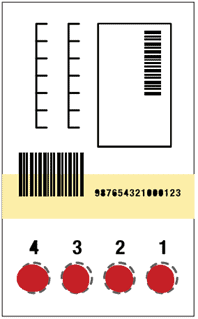Monitoring your baby’s blood phenylalanine (PHE) levels is an important part of managing PKU and helping your child thrive. Keeping blood PHE levels within the target range leads to normal growth and brain functions. If blood PHE levels are too high over an extended period, it may affect the brain. If PHE levels are too low for a lengthy period, it may negatively affect growth.
It is normal for PHE levels to vary a bit over the course of the day. This should not be a source of worry. Many factors can affect PHE levels. Being aware of these factors can help you and your metabolic clinician work through possible reasons if your child’s levels come back too high or too low. Discussing your child’s lab results with your metabolic team is useful as you both learn about your child’s individual trends and tolerances.
The target range for blood PHE is 2-6 mg/dl (or 120-360 µmol/L, depending on the units used by your clinic).
Reasons Your Baby’s PHE Levels May Increase
- If PHE intake is too high. Every baby with PKU is a little different. It can take time for your metabolic team to determine how much PHE is the right amount for your baby. Trust your metabolic team and closely follow their instructions for how to feed your baby.
- If total energy intake is too low. If your baby isn’t getting enough calories, the body can start to break down its own protein to use as energy. This breakdown releases PHE into the blood. If your baby isn’t eating as much as usual, work with your metabolic dietitian to try to figure out why.
- If your baby is sick. Just like when your baby doesn’t get enough calories, when your baby is sick, the body uses extra energy to try to heal itself. Illnesses like infections or fevers can cause babies to break down their own body protein. Always reach out to your healthcare team if your child is sick or if eating patterns change.
Reasons Your Baby’s PHE Levels May Decrease
- If your baby is not getting enough PHE/whole protein. Make sure your baby is getting the full amount of PHE or whole protein your dietitian has instructed, whether that’s from breast milk, standard infant formula, or solid foods if your baby is a bit older. Your dietitian will adjust your child’s recommended diet if PHE levels are too low.
- If your baby is going through a growth spurt. When babies go through a period of fast growth, they use more PHE to build muscle and other tissues. This decreases the amount of PHE in the blood.

How to Take a Blood Sample
Your metabolic team will provide specific guidance on the methods you should use for testing PHE levels. Usually, PHE levels are measured using a small blood sample collected onto a special filter paper card. This card is just like the one used for newborn screening when your child was born. Often, a small lancet is used to extract a few drops of blood from the heel or big toe (for babies and toddlers) or from the fingertip (for children and adults). The procedure is easy to manage once you have had a little practice. You should always use the method recommended by your metabolic clinic.
Blood Sampling Tip
Increasing circulation to the foot makes collecting the blood easier. Make sure the foot is warm. Soak the heel in warm water, gently rub the area, or hold a warm washcloth against the spot before taking the sample.
How Frequently Should I Test?
During infancy your baby is growing rapidly. Frequent monitoring of blood PHE levels is important to ensure they are getting what they need to grow and develop. During this time your clinic policy may require you to take samples once or twice per week. Once your baby has settled into his diet and growth has slowed down, the frequency of blood samples may be adjusted. Your metabolic team may request extra blood samples after an illness or after a diet change to determine whether PHE levels are too high or too low.
Over time, you will develop a testing routine that works for your family. You and your metabolic team will work together to maintain your child’s PHE levels in the target range.
The information in this blog is not meant to replace professional medical advice, always consult your metabolic healthcare professional before making any changes to the management of your child’s disorder.
References
- Summary of the Medical and Dietary Guidelines for the Treatment of PKU. National PKU Alliance. https://www.npkua.org/What-is-PKU/PKU-Medical-Guidelines. Accessed Nov. 4, 2020.
- Chapter 3: Monitoring Blood Phenylalanine Levels. My PKU Binder. National PKU Alliance. https://www.npkua.org/What-is-PKU/My-PKU-Binder. Accessed Nov. 4, 2020.
